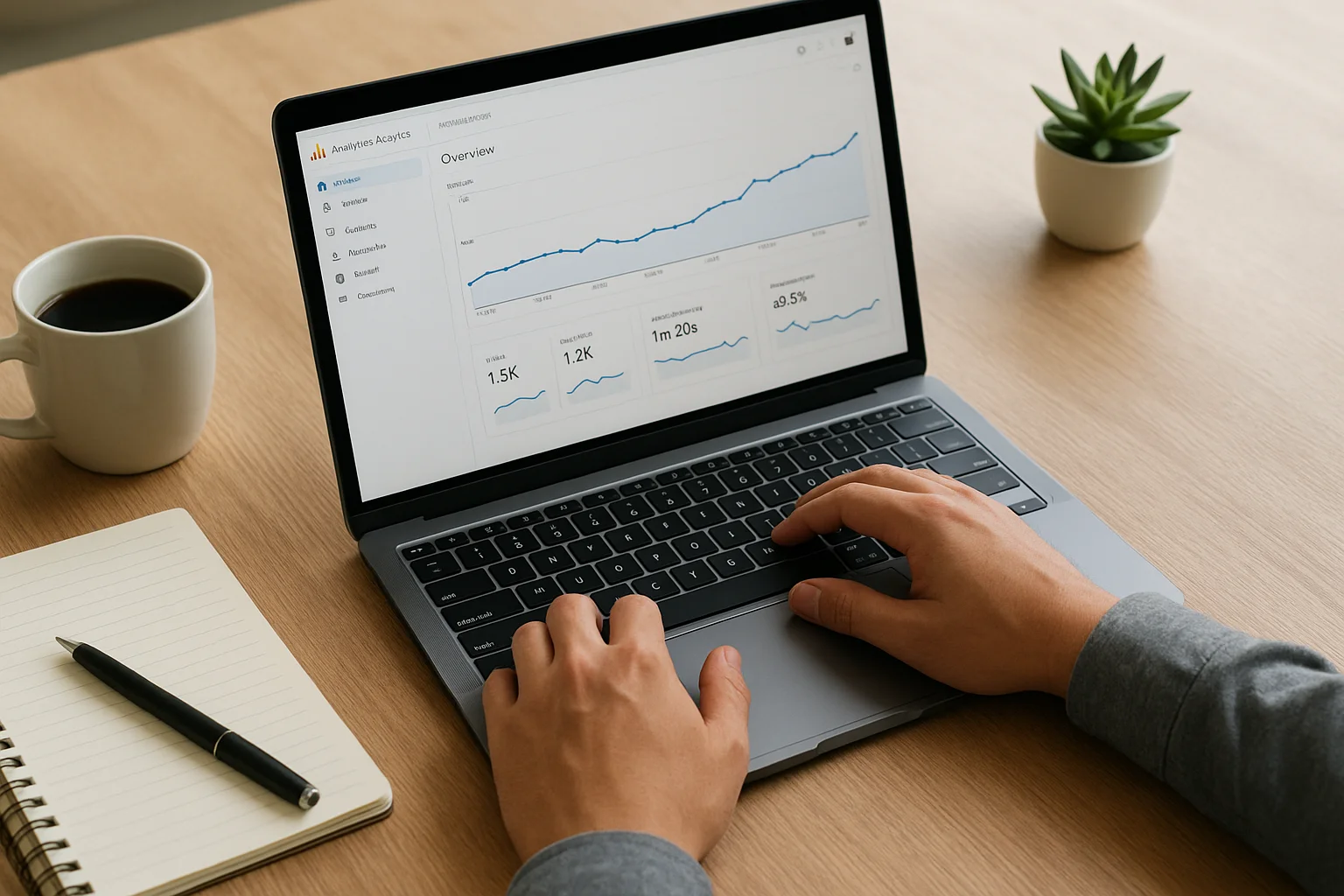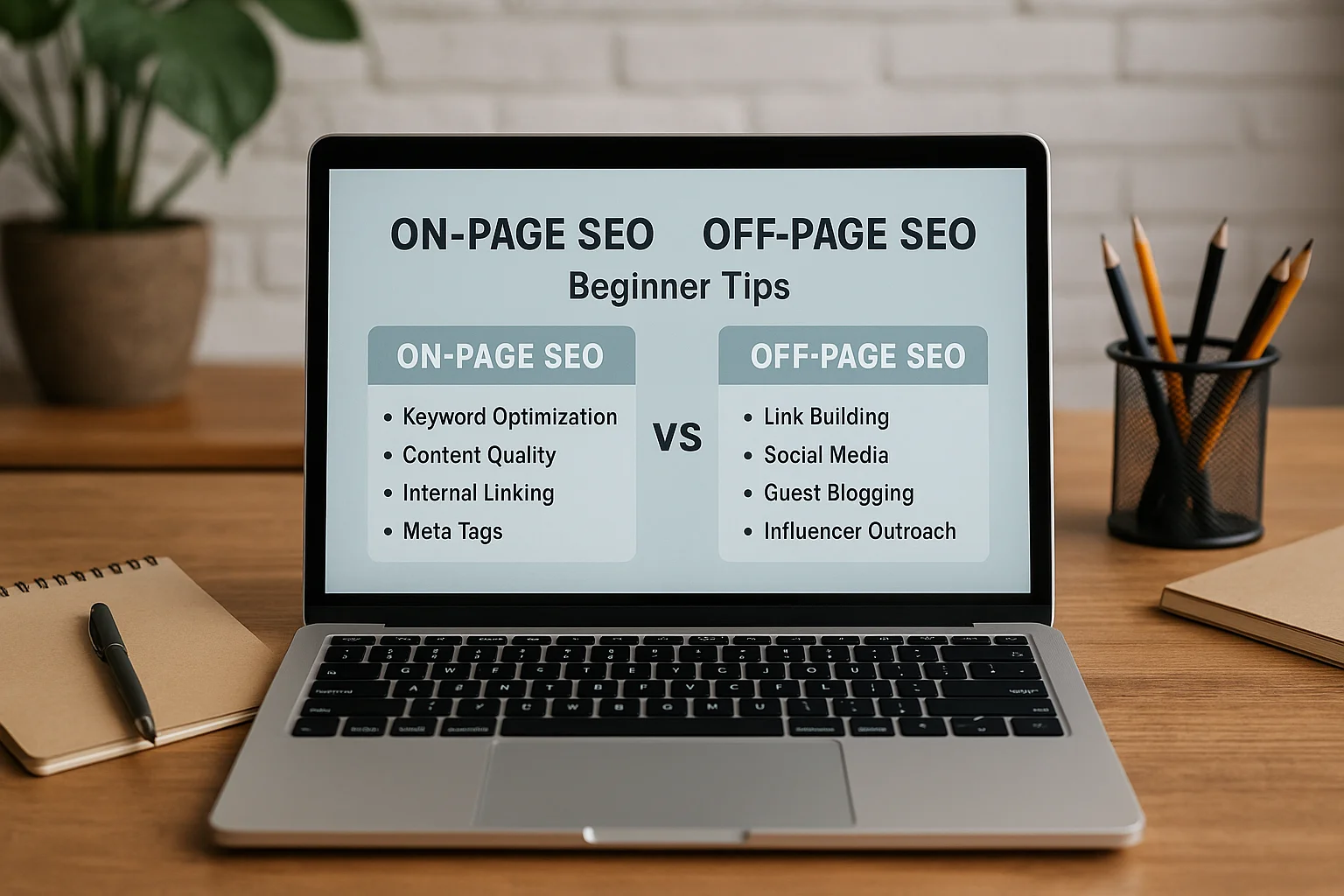Using Google Analytics to Track SEO Performance

Why Tracking SEO Performance Matters
In today's competitive digital landscape, understanding how your website performs in search engines is crucial. Tracking SEO performance allows businesses to identify which strategies are working and which need adjustment. Without proper tracking, you risk investing time and resources in tactics that may not deliver results.
One of the main benefits is the ability to measure the impact of your content and keywords. By monitoring performance, you can see which pages drive the most traffic, which keywords attract relevant visitors, and how users interact with your site after arriving from search engines. This insight enables you to make data-driven decisions rather than relying on assumptions.
Tracking also helps in spotting trends over time. Seasonal fluctuations, changes in search algorithms, and shifts in user behavior can all influence your traffic and rankings. By keeping an eye on SEO metrics consistently, you can react quickly to any negative trends and capitalize on positive ones, ensuring sustained growth.
Moreover, tracking SEO performance provides visibility into the return on investment (ROI) of your efforts. It allows you to quantify the value of organic search traffic, compare it to other marketing channels, and justify SEO budgets and strategies to stakeholders.
Finally, a strong tracking practice supports continuous improvement. By regularly analyzing data, testing new approaches, and refining your tactics, you can steadily enhance your website’s visibility, engagement, and conversions. Understanding the performance of your SEO efforts is essential for building a sustainable and successful online presence.
Setting Up Google Analytics for SEO Tracking
To effectively monitor SEO performance, it's essential to properly set up Google Analytics on your website. The first step is to create a Google Analytics account if you don't already have one. Once your account is ready, you will need to add a tracking code to every page of your website. This code collects data about visitors and their interactions with your content.
After implementing the tracking code, it's crucial to configure view settings correctly. This includes setting up your website’s default URL, time zone, and currency. You should also create filters to exclude internal traffic, such as your own visits or those from team members, to ensure your data reflects real user behavior.
Enabling Enhanced Link Attribution and setting up site search tracking are additional steps that help you understand user navigation and behavior. These settings allow you to see which links are most clicked and how users interact with your internal search feature, providing insights into content performance and potential areas for improvement.
It's also important to define goals and conversions early on. Goals in Google Analytics track key actions like form submissions, newsletter sign-ups, or product purchases. Setting them up allows you to measure how organic traffic contributes to your business objectives and which SEO strategies are generating tangible results.
Finally, integrating Google Analytics with Google Tag Manager can simplify future tracking adjustments and advanced tracking needs. With Tag Manager, you can manage events, clicks, and custom interactions without changing the website code repeatedly, making it easier to maintain accurate and comprehensive SEO tracking.
Understanding Key SEO Metrics in Google Analytics
Google Analytics provides a wealth of data, but focusing on the right SEO metrics is essential to evaluate your website’s performance accurately. Understanding these metrics allows you to identify opportunities for optimization and measure the effectiveness of your SEO efforts.
Organic Sessions: This metric shows the number of visits coming from search engines. Monitoring organic sessions over time helps you understand whether your SEO strategies are driving more traffic to your website.
Users and New Users: These metrics indicate how many individual visitors are landing on your site, and how many of them are visiting for the first time. Tracking new users can highlight the success of campaigns aimed at attracting fresh audiences.
Bounce Rate: The bounce rate measures the percentage of visitors who leave after viewing only one page. A high bounce rate can indicate that landing pages are not relevant to the search queries or that user experience issues are present.
Average Session Duration: This metric reveals how long users stay on your website on average. Longer sessions typically suggest that visitors find your content engaging and valuable.
Pages per Session: This shows the average number of pages a user visits during a single session. A higher number of pages per session often indicates effective internal linking and content that encourages deeper exploration.
Landing Pages: Identifying which pages users first arrive on from search engines helps determine which content is attracting organic traffic. This insight can guide your content strategy and SEO optimization efforts.
Exit Pages: Knowing where users leave your website can reveal potential issues with content, page layout, or call-to-actions that may need improvement to retain traffic.
Goal Completions: Setting up goals in Google Analytics allows you to track conversions, such as newsletter sign-ups, downloads, or purchases. Understanding which organic traffic contributes to these goals provides actionable insights into your SEO ROI.
Acquisition Reports: These reports show the performance of different traffic sources, allowing you to compare organic search against other channels. Evaluating these metrics helps you allocate resources more effectively and refine your SEO strategies.
By closely monitoring these key metrics, you can gain a comprehensive understanding of how well your SEO efforts are performing and where to focus your optimization efforts to drive meaningful results.
Analyzing Organic Traffic
Understanding your organic traffic is a cornerstone of effective SEO strategy. Organic traffic refers to visitors who arrive at your website through unpaid search results, and analyzing this data provides insights into how your content performs in search engines.
In Google Analytics, you can access organic traffic data under the Acquisition > All Traffic > Channels report. By selecting the "Organic Search" channel, you can see which search engines are driving visitors, the volume of traffic, and how these visitors engage with your website.
Identifying top-performing pages: By analyzing the landing pages that receive the most organic traffic, you can determine which content resonates with users and aligns with search intent. This information helps you replicate successful strategies across other pages or topics.
Tracking keyword performance: While Google Analytics does not provide all keyword data due to search privacy, combining it with Search Console integration can reveal which queries are driving visitors. This allows you to focus on optimizing high-value keywords and discovering new content opportunities.
Analyzing traffic trends: Monitoring organic traffic over different periods, such as week-over-week or month-over-month, helps you identify growth patterns or seasonal fluctuations. Sudden drops in traffic may indicate algorithm updates, technical issues, or content that is losing relevance.
Evaluating user engagement: Organic traffic alone is not enough; understanding how visitors interact with your site is equally important. Metrics such as average session duration, pages per session, and bounce rate reveal whether your content meets user expectations and encourages deeper exploration.
Segmenting traffic: You can use Google Analytics to segment organic visitors by device, location, or new vs. returning users. These segments provide a clearer picture of your audience, allowing you to tailor content and SEO strategies to meet the needs of different user groups.
By systematically analyzing organic traffic, you can uncover actionable insights, refine your content strategy, and prioritize optimization efforts that drive the most relevant and engaged visitors to your website.
Monitoring Landing Page Performance
Landing pages play a critical role in converting organic traffic into meaningful actions. Monitoring their performance in Google Analytics helps you understand which pages are attracting visitors and how effectively they engage them.
To analyze landing pages, navigate to Behavior > Site Content > Landing Pages in Google Analytics. This report shows the first page users see when they enter your website, along with key metrics like sessions, bounce rate, and average session duration.
Traffic volume: Identifying pages with the highest number of visits allows you to understand which content is most visible in search engines. High-traffic landing pages often indicate well-optimized content or strong alignment with user intent.
User engagement: Metrics such as bounce rate, pages per session, and average session duration reveal how effectively a landing page captures and retains visitor attention. Pages with high bounce rates may require improvements in content, design, or calls-to-action to keep users engaged.
Conversion performance: For landing pages designed to generate leads, sign-ups, or purchases, tracking goal completions is essential. This provides insight into which pages successfully guide visitors toward your objectives and which need optimization to increase conversions.
Content optimization: Analyzing top-performing landing pages helps you identify content strategies that resonate with your audience. You can replicate these strategies on underperforming pages, improve keyword targeting, or enhance internal linking to boost visibility and engagement.
Segment analysis: Breaking down landing page performance by device, location, or traffic source can uncover trends that inform your SEO and content strategies. For example, certain pages may perform better on mobile devices, indicating opportunities for mobile optimization.
Regularly monitoring landing page performance ensures that your website not only attracts visitors but also engages them effectively and drives desired actions. It allows you to prioritize optimization efforts where they will have the greatest impact on both traffic and conversions.
Ready to showcase your project?
Join thousands of developers and entrepreneurs who have already listed their websites in our directory. Get discovered by potential users and grow your audience.
Free to list • Instant approval • No hidden fees
Frequently Asked Questions
What is the main purpose of tracking SEO performance?
Related articles

How to Optimize Your Project Pages for Faster Google Indexing
Boost your project pages’ visibility by speeding up Google indexing. Learn actionable strategies from URL optimization to structured data, internal linking, and content tips for faster search engine recognition.

Quick Fixes for Google Indexing Errors
Struggling with Google indexing errors? This guide explores quick and practical fixes to help your pages appear in search results faster. Learn how to resolve common issues like “Crawled – Not Indexed,” blocked URLs, and duplicate content while ensuring your site remains fully optimized for long-term SEO success.

SEO Trends to Watch in 2025 for Startups
Discover the key SEO trends shaping 2025 and learn how startups can adapt to stay competitive. From AI-powered search and voice optimization to EEAT and zero-click results, this guide explores practical strategies to boost online visibility and long-term growth.

The Impact of Core Web Vitals on Rankings and Conversions
Core Web Vitals are key performance metrics that Google uses to measure user experience. They influence not only search engine rankings but also how visitors interact with your website. A fast, stable, and responsive site improves visibility, boosts engagement, and increases conversions. Understanding and optimizing these metrics is essential for businesses looking to grow online.

Local SEO for Small Projects: A Practical Guide
Local SEO is essential for small projects aiming to attract nearby customers. This guide covers practical strategies—from Google Business optimization and keyword research to managing reviews and local links—to help your business get noticed locally and grow effectively.

SEO Myths That Are Holding Back Your Project
Many businesses waste time on outdated SEO advice. From overvaluing keywords to chasing low-quality links, myths can stall your growth. This post debunks common SEO misconceptions and shows what strategies truly drive results.

On-Page vs Off-Page SEO: A Beginner’s Guide
SEO can be confusing for beginners, but understanding the difference between On-Page and Off-Page SEO is essential. On-Page SEO focuses on optimizing your website’s content and structure, while Off-Page SEO builds authority through backlinks and online presence. This guide breaks down the basics to help you start improving your site’s search rankings today.

The Importance of Site Speed for SEO and User Experience
Site speed is a critical factor for both search engine rankings and user experience. Slow-loading pages frustrate visitors, increase bounce rates, and hurt conversions. This article explores why speed matters, how it affects SEO, and practical tips to make your website faster.

How to Perform a Simple SEO Audit for Your Website
Conducting an SEO audit doesn’t need to be complex. With a few simple steps, you can evaluate your site’s performance, uncover technical issues, optimize on-page elements, and strengthen your SEO strategy. This guide will walk you through the essential checks to ensure your website is both search engine and user-friendly.